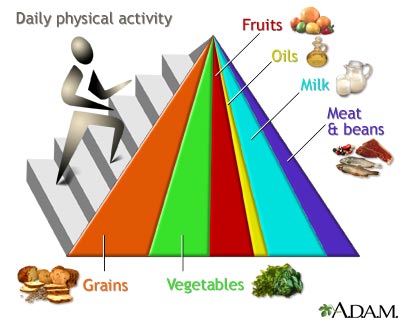Symptoms & Signs
Symptoms usually begin immediately, within 2 hours after eating. Rarely, the symptoms may begin hours after eating the offending food.
If you develop symptoms shortly after eating a specific food, you may have a food allergy. Key symptoms include hives, hoarse voice, and wheezing.
Other symptoms that may occur include:
* Abdominal pain
* Diarrhea
* Difficulty swallowing
* Itching of the mouth, throat, eyes, skin, or any area
* Light-headedness or fainting
* Nasal congestion
* Nausea
* Runny nose
* Swelling (angioedema), especially of the eyelids, face, lips, and tongue
* Shortness of breath
* Stomach cramps
* Vomiting
Symptoms of oral allergy syndrome:
* Itchy lips, tongue, and throat
* Swollen lips (sometimes)
Diagnosis & Tests
In severe reactions, you may have low blood pressure and blocked airways.

A blood or skin test can be done to identify elevated antibody levels (particularly IgE) and confirm that you have an allergy.
With elimination diets, you avoid the suspected food until your symptoms disappear. Then the foods are reintroduced to see if you develop an allergic reaction.
In provocation (challenge) testing, you are exposed to a suspected allergen under controlled circumstances. This may be done in the diet or by breathing in the suspected allergen. This type of test may provoke severe allergic reactions. Challenge testing should only be done by a doctor.
Never try to deliberately cause a reaction or reintroduce a food on your own. These tests should only be performed under the guidance of a health care provider — especially if your first reaction was severe.
See: Allergy testing
Food allergy: Overview, Causes
Food allergy: Symptom & Signs, Diagnosis & Tests
Food allergy: Treatment
Review Date : 4/23/2009
Reviewed By : Stuart I. Henochowicz, MD, FACP, Associate Clinical Professor of Medicine, Division of Allergy, Immunology, and Rheumatology, Georgetown University Medical School. Also reviewed by David Zieve, MD, MHA, Medical Director, A.D.A.M., Inc.
